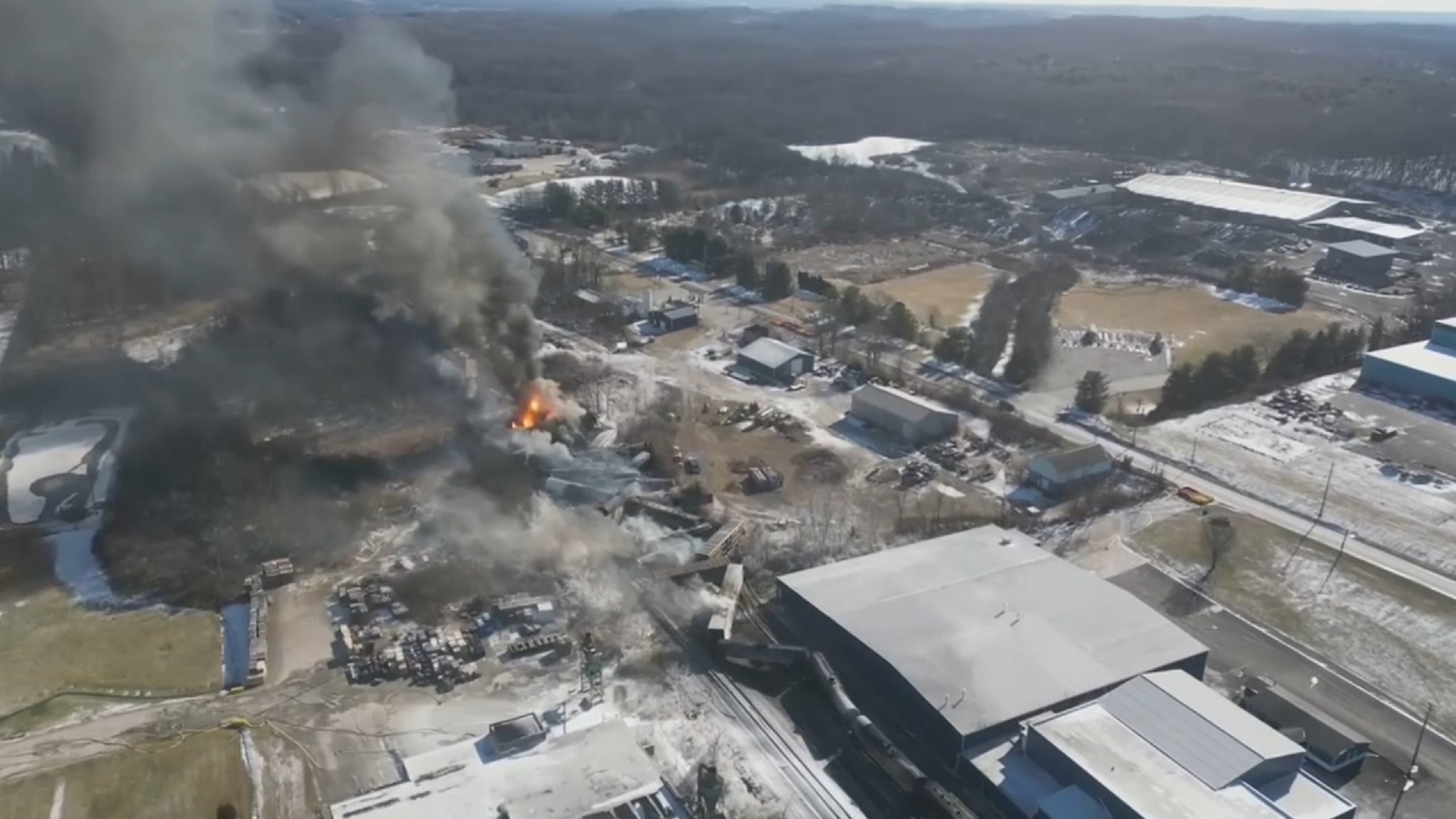HARRISBURG, Pa. — The Norfolk Southern train that derailed on Feb. 3 in eastern Ohio is continuing to cause concern over the toxic chemicals released, though scientists said it’s unlikely the chemicals will be a danger to people in central Pennsylvania.
Ten of the 50 derailed train cars were carrying hazardous, potentially explosive materials.
One of those chemicals was vinyl chloride, a gas used to make plastic. Contact with vinyl chloride can cause irritation of the eyes, nose, throat and lungs. It is also associated with an increased risk of a rare form of liver cancer.
Another chemical released was ethylhexyl acrylate, a carcinogen that causes burning and irritation of the skin and eyes.
Other released substances included ethylene glycol monobutyl ether and isobutylene.
Three days after the derailment, officials burned some of the cars in order to prevent an explosion. However, that action did not address the toxins inside.
“They weren’t really mitigating any of the environmental hazards. They were mitigating an immediate safety hazard in case there was an explosion,” said Michael Meyer, professor of earth systems science at Harrisburg University. “A lot of the chemicals they did burn off still would have given aerosols into the air, in addition to releasing material that would go onto the ground, into the surface water streams, possibly even the groundwater.”
Central Pennsylvania is unlikely to get enough of the toxic material to put people in danger, Meyer said.
The main reason for that is distance. Harrisburg is nearly 200 miles away from East Palestine, Ohio, where the derailment happened. In addition, wind patterns in the area do carry particles west, but the particles also travel up and away from people at ground level.
“One of the main chemicals released was vinyl chloride. While this chemical is toxic it would dissipate quickly in the air and it decomposes under sunlight,” Matt Nelson, campus hygiene officer at York College of Pennsylvania, wrote in a statement. “There is little to no danger to York County residents.”
Some of the toxins spilled into the Ohio River, which flows south, so it’s unlikely any bodies of water in Central Pennsylvania will be affected.
EPA Regional Administrator Debra Shore wrote in a statement,
“EPA Region 5 is also working closely with Ohio EPA to determine what impact the spill has had on surface and groundwater. State and local agencies are conducting sampling throughout the Ohio River to ensure drinking water intakes aren’t affected, and EPA is continuing to assist the state with sampling efforts at water treatment intake points along the Ohio River.”
The EPA added that officials are continuously monitoring air quality near the incident and have not detected concerning levels of particulate matter from the incident since the controlled burn on Feb. 6.
Norfolk Southern wrote in a statement,
“Norfolk Southern and our contractors remain on-site conducting remediation activities, as well as working with local, state, and federal partners on air and water monitoring.”
Meyer said there is no reason for central Pennsylvanians to be concerned about toxic chemicals, at least from this derailment.
“If there was a worry that any of us should have, it is that this train is one of many that are crisscrossing the state, especially our major metro areas,” he said.

